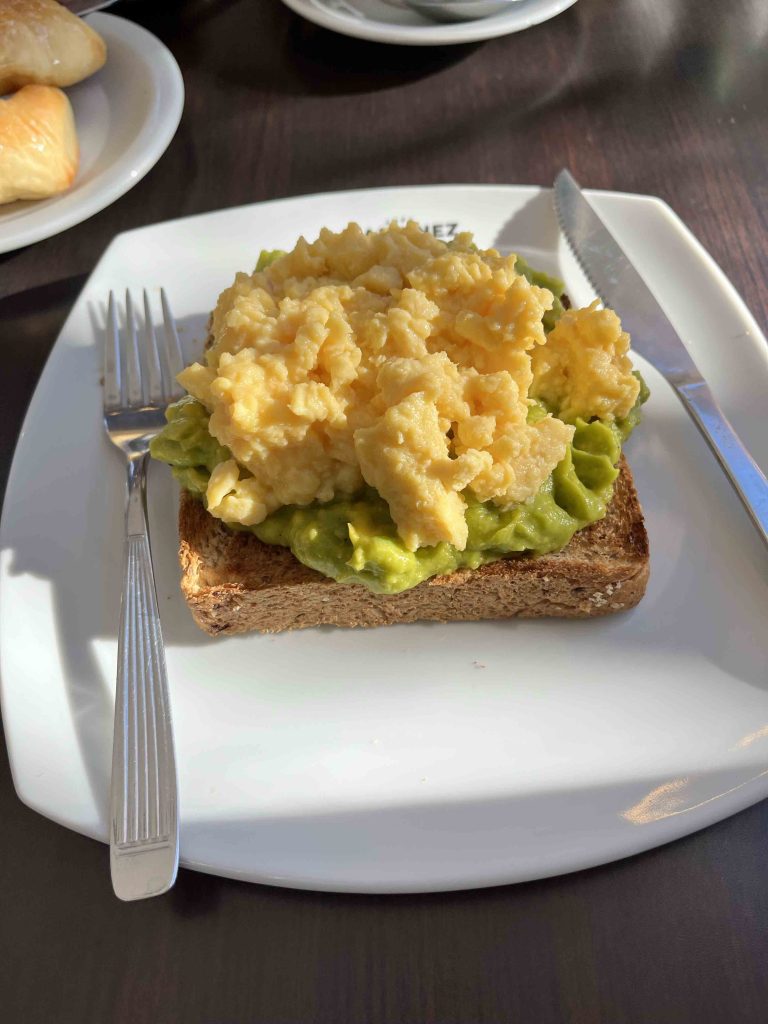
High-Protein Diet Guide for Woman: Maximize your Health and Fitness
Increasing my protein intake has significantly transformed my life, boosting both my energy levels and overall health. Recognizing the profound impact of a high-protein diet, I’ve created this comprehensive guide to help women incorporate more protein into their daily diets. From enhancing muscle growth to managing weight and supporting menstrual health, this guide covers all you need to know about the benefits of a high-protein lifestyle and practical tips to integrate it into your routine.
Benefits of a High-Protein Diet


Muscle Maintenance and Growth
Protein is essential for repairing and building muscle tissue, especially important for active women. A high-protein diet helps maintain muscle mass, improves strength, and supports recovery after workouts, keeping you strong and healthy.
Weight Management
High-protein foods keep you fuller for longer, reducing cravings and overall calorie intake. Protein also boosts metabolism, helping you manage your weight more effectively and stay energized throughout the day.
Menstrual Health
Adequate protein intake supports hormonal balance, reducing PMS symptoms and stabilizing menstrual cycles. By ensuring you get enough protein, you can improve your overall hormonal health and well-being.
Bone Health
Protein plays a vital role in maintaining bone density, which is particularly important for women as they age. A high-protein diet helps support bone health, reducing the risk of osteoporosis and fractures.
Skin, Hair, and Nails
Protein is a key component of collagen and keratin, which are essential for healthy skin, hair, and nails. A protein-rich diet can improve skin elasticity, promote hair growth, and strengthen nails.
Metabolic Health
Protein helps regulate blood sugar levels, reducing the risk of type 2 diabetes. By stabilizing blood sugar, a high-protein diet can help prevent energy crashes and improve overall metabolic health.
Healthy Aging
As you age, maintaining muscle mass and bone density becomes increasingly important. A high-protein diet supports these aspects, promoting a healthier, more active lifestyle in later years.
Mental Clarity and Mood
Protein supports neurotransmitter function, which can improve mental clarity and mood stability. A balanced protein intake helps maintain focus and reduces the risk of mood swings and anxiety.
How Much Protein Do You Need?
Understanding how much protein you need is essential for reaping the benefits of a high-protein diet. Protein requirements can vary based on factors such as age, activity level, and overall health. Here’s a guide to help women determine their ideal protein intake.
Recommended Protein Intake for Women
The recommended dietary allowance (RDA) to prevent deficiency for an average sedentary adult is 0.8 grams of protein per kilogram of body weight. This translates to about 0.36 grams of protein per pound of body weight.
Active Women Women who exercise regularly or lead an active lifestyle require more protein to support muscle repair and growth. Aim for 1.2 to 2.0 grams of protein per kilogram of body weight (0.54 to 0.91 grams per pound).
Women Over 50 Maintaining muscle mass and bone density is essential as women age. Older women may benefit from higher protein intake, targeting 1.0 to 1.2 grams of protein per kilogram of body weight (0.45 to 0.54 grams per pound).
Pregnant and Breastfeeding Women During pregnancy and breastfeeding, protein needs increase to support the baby’s growth and development. Pregnant women should aim for an additional 25 grams of protein per day, totaling around 71 grams per day. Breastfeeding women need about 1.1 grams of protein per kilogram of body weight (0.50 grams per pound).
Weight Management For women focused on weight loss or management, higher protein intake helps maintain muscle mass while promoting fat loss. Aim for 1.2 to 1.6 grams of protein per kilogram of body weight (0.54 to 0.73 grams per pound).
Incorporating More Protein into Your Diet
Start the Day Right: Protein-Rich Breakfast
Kickstart your day with a protein-rich breakfast to boost metabolism and keep you satiated until lunch. Here are some delicious options:
Eggs
- Scrambled Eggs with Cottage Cheese Add a few spoonfuls of cottage cheese to your scrambled eggs for a creamy texture and extra protein. Cook as usual and enjoy with whole grain toast or fresh vegetables.
- Egg Sandwich with Extra Egg Whites Prepare a sandwich using whole grain bread, adding an egg along with extra egg whites for an additional protein boost. Add spinach or other vegetables for extra nutrients.


Protein breakfast bowls
- Greek Yogurt Top with fruits like berries, and a sprinkle of nuts or seeds. Mix in a scoop of protein powder for an extra boost.
- Protein Oatmeal Bowl Cook oatmeal with milk or a milk alternative. Stir in a scoop of protein powder after cooking. Top with fruits, nuts, and a drizzle of honey or maple syrup.
Protein Smoothies
- Blend your favorite protein powder with spinach, berries, and almond milk. Add ingredients like chia seeds, flax seeds, or nut butter for additional nutrients.

Smart Snacking: High-Protein Snacks
Nuts
- A handful of almonds, walnuts, or pistachios.
- Nut butter on apple slices or whole grain toast.

Veggies with Dip
- Carrots, celery, or bell peppers dipped in cottage cheese or hummus.
- Cucumber slices with Greek yogurt dip.
Protein Bars
- Look for bars with at least 20 grams of protein and low sugar content.
I personally love Quest Bars and Grenade bars.
Practical Tips for a High-Protein Lifestyle
Planning and Preparing Meals
One of the keys to successfully integrating more protein into your diet is effective meal planning and preparation. By planning ahead, you can ensure that you have nutritious, protein-rich meals ready to go, making it easier to stick to your dietary goals. Here are some strategies and meal ideas to help you get started.
Meal Prep Strategies
Set Aside Time for Meal Prep: Dedicate a few hours once or twice a week to prepare and cook meals. This can save time and reduce stress during busy weekdays.
Batch Cooking: Cook large batches of protein sources like chicken breasts, turkey, beans, or tofu. Store them in the fridge or freezer for quick access throughout the week.
Portion Control: Divide your meals into individual portions using containers. This helps with portion control and makes it easy to grab a meal on the go.
Variety is Key: Prepare different protein sources and side dishes to avoid monotony. Rotate between chicken, fish, beans, lentils, and other proteins.
Incorporate Snacks: Prepare high-protein snacks like hard-boiled eggs, Greek yogurt, and nuts. Keep them accessible for quick, healthy snacking.
Use Versatile Ingredients: Choose ingredients that can be used in multiple dishes. For example, grilled chicken can be used in salads, wraps, and stir-fries.
Shopping for Protein
When shopping for protein, it’s important to know the best sources and understand their nutritional content. Whether you prefer vegetarian, fish, or meat proteins, there are plenty of options to choose from. Here’s a guide to help you make informed choices, including the protein content per 100 grams for each option.
Vegetarian Protein Sources
- Lentils - Versatile and can be used in soups, salads, and stews. 9 grams/100 grams
- Chickpeas - Great for making hummus, adding to salads, or cooking in stews. 19 grams/100 grams
- Quinoa - A complete protein that works well in salads, bowls, and as a rice substitute. 14 grams/100 grams
- Tofu - Can be grilled, stir-fried, or added to soups and salads. 8 grams/100 grams
- Edamame (Soybeans) - Excellent as a snack or added to salads and stir-fries. 11 grams/100 grams
- Seitan - A high-protein meat substitute made from wheat gluten. 25 grams/100 grams
- Greek Yogurt - Ideal for breakfast, snacks, or as a base for smoothies and sauces. 10 grams/100 grams
- Cottage Cheese - Can be eaten on its own, added to salads, or used in recipes. 11 grams/100 grams


Fish Protein Sources
- Salmon - Rich in omega-3 fatty acids and great for baking, grilling, or pan-searing. 20 grams/100 grams
- Tuna - Can be used in salads, sandwiches, or cooked dishes. 30 grams/100 grams
- Cod - A lean fish that is perfect for baking or frying. 18 grams/100 grams
- Trout - Delicious when grilled or baked with herbs and lemon. 21 grams/100 grams
- Sardines - High in protein and healthy fats, suitable for salads or on toast. 25 grams/100 grams
Meat Protein Sources
- Chicken Breast - A lean and versatile protein that can be baked, grilled, or sautéed. 31 grams/100 grams
- Turkey Breast - Another lean option, great for sandwiches, salads, or main dishes. 29 grams/100 grams
- Lean Beef - Opt for cuts like sirloin or tenderloin for a high-protein, low-fat option. 26 grams/100 grams
- Pork Loin - A lean cut of pork that can be roasted, grilled, or pan-fried. 27 grams/100 grams
- Lamb - Rich in flavor, suitable for roasting, grilling, or stewing. 25 grams/100 grams
- Bison - A leaner alternative to beef, perfect for grilling or stewing. 28 grams/100 grams

Guide to Protein Powder
Protein powders are a convenient and versatile way to increase your protein intake, especially for those with busy lifestyles or specific dietary needs. They can be easily added to smoothies, baked goods, or simply mixed with water or milk. Here’s a detailed guide to help you choose the right protein powder and incorporate it effectively into your diet.
Whey Protein Derived from milk, whey protein is a complete protein, meaning it contains all nine essential amino acids. It’s quickly absorbed by the body, making it ideal for post-workout recovery.
Protein Content: 80 grams/100 grams
Casein Protein Also derived from milk, casein is digested and absorbed more slowly than whey, providing a steady release of amino acids over time. This makes it suitable for sustained protein release.
Protein Content: 80 grams/100 grams
Soy Protein A plant-based complete protein, soy protein is suitable for vegetarians and vegans. It contains all essential amino acids and is beneficial for heart health.
Protein Content: 36 grams/100 grams
Pea Protein Made from yellow split peas, pea protein is a great plant-based option. It is hypoallergenic and easily digestible.
Protein Content: 80 grams/100 grams
How to Choose the Right Protein Powder
To choose the right protein powder, consider your dietary needs, purpose, protein content, flavor, mixability, and any additional additives. Look for high protein content per serving and minimal added sugars or artificial ingredients, and select a flavor and powder that mixes well with your preferred liquids.
How to Use Protein Powder
To use protein powder, mix it into protein shakes with water, milk, or plant-based milk, blend it into smoothies with fruits and greens, incorporate it into baking recipes, stir it into oatmeal or yogurt, and add it to soups and sauces. Start with half a serving if you’re new to protein powder, stay hydrated, combine it with whole foods, and follow the serving size recommendations on the packaging.
Conclusion
Incorporating a high-protein diet into your daily routine can offer numerous benefits, from muscle growth and weight management to improved metabolic health and hormonal balance. To achieve these benefits, it’s essential to balance protein intake with other nutrients such as carbohydrates, healthy fats, vitamins, and minerals. By planning your meals, including a variety of protein sources, and following practical dietary tips, you can enhance your overall health and well-being. Remember, a balanced diet and consistent healthy habits are key to long-term success.








Post a comment